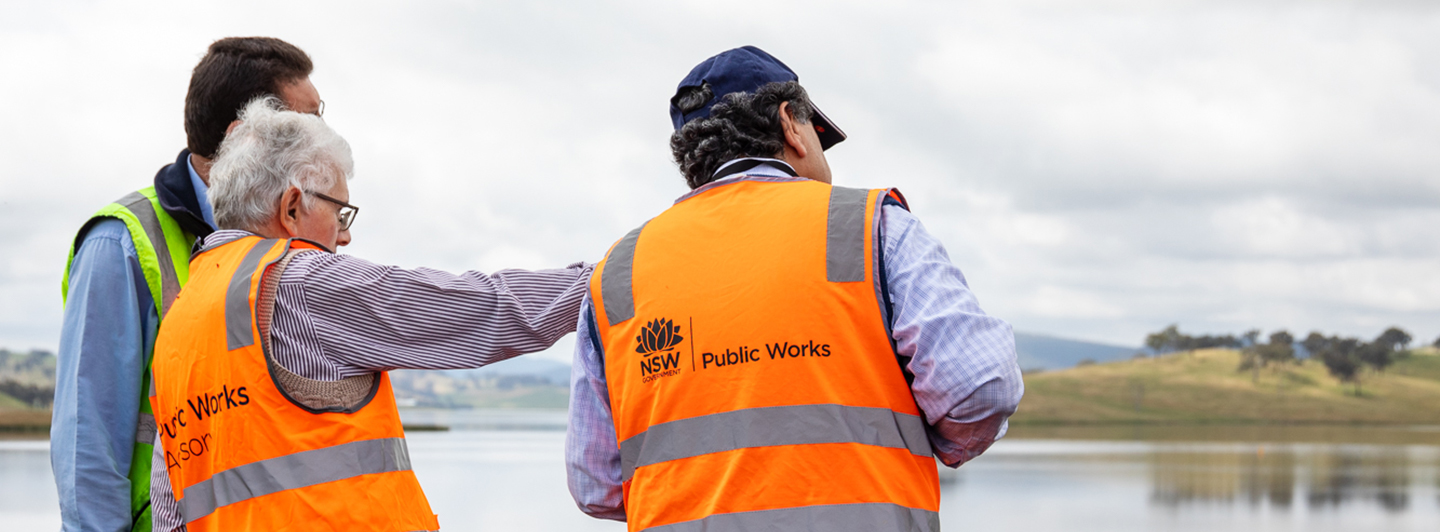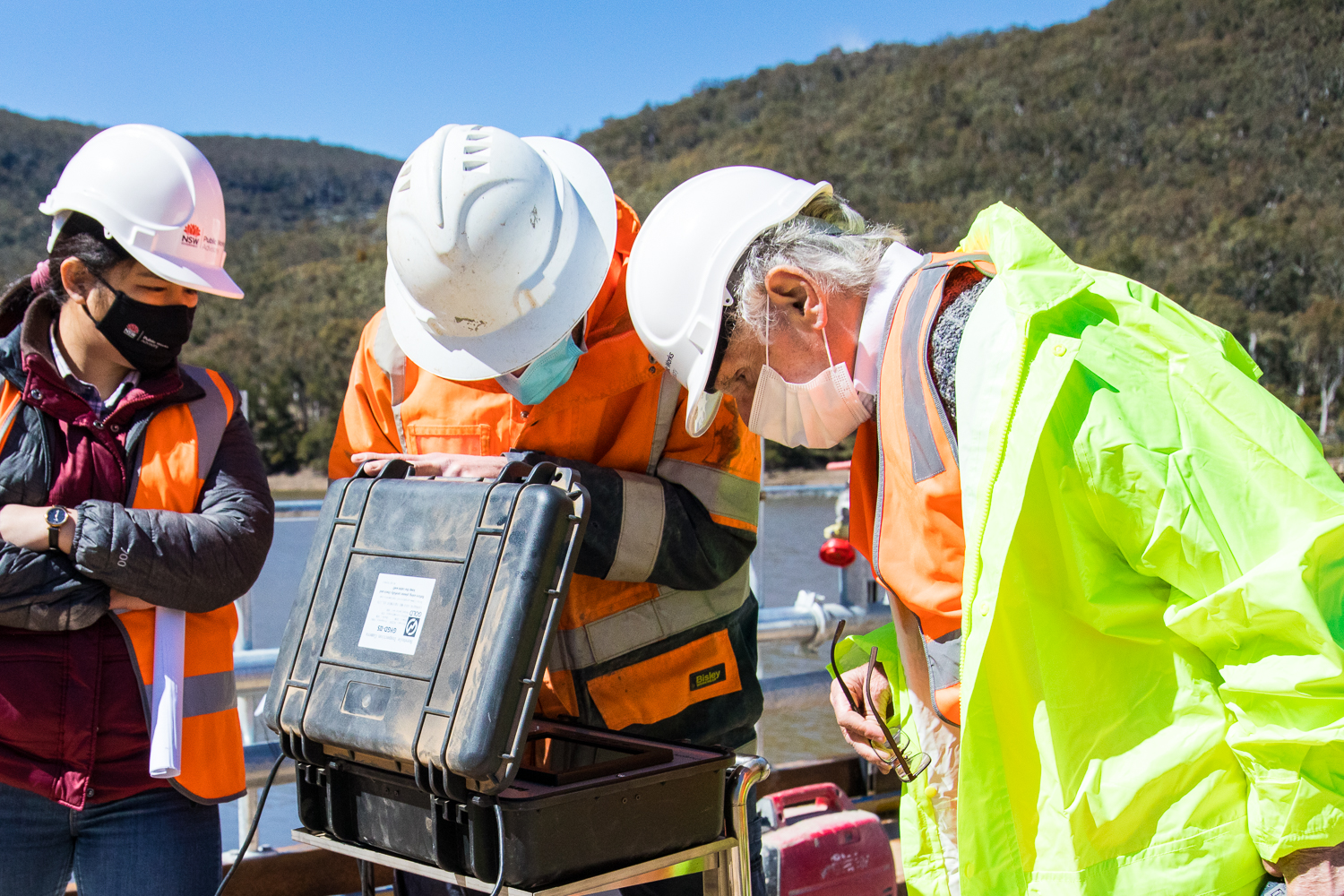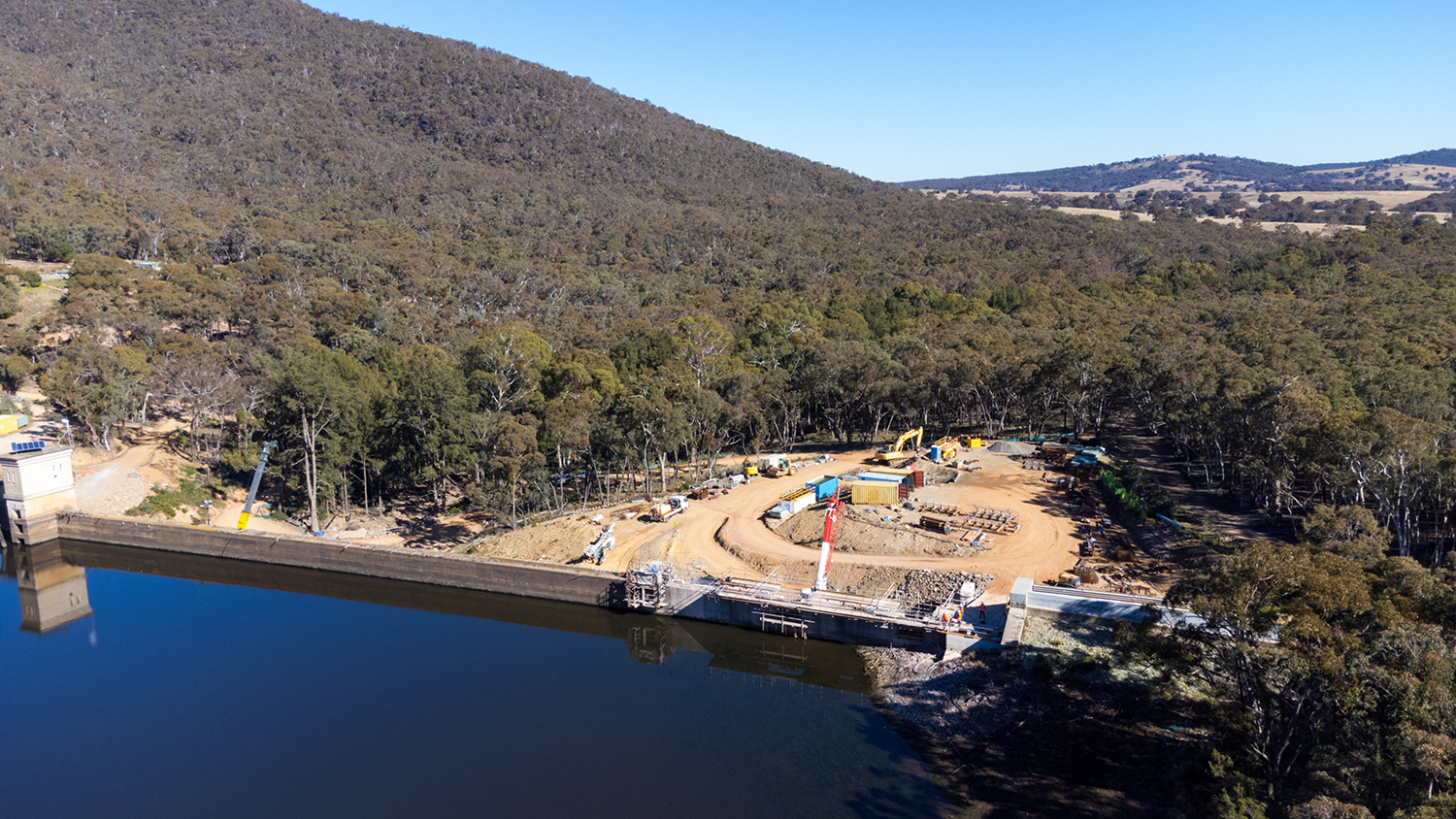
Future-proofing Winburndale Dam: Expert George Samios talks dam safety
The picturesque Winburndale Dam has provided fresh drinking water to Bathurst, NSW, and surrounding areas for nearly 100 years. In partnership with Bathurst Regional Council, NSW Public Works is adding post-tension cables to the dam wall to ensure it stands strong for another 100 years. Gavin Priestley, NSW Public Work’s Regional Director of Riverina-Western, spoke with George Samios, a dam expert who has worked at NSW Public Works for more than 40 years, to learn about this complex project and how NSW Public Works can help local governments to upgrade their ageing dams.
You are leading an upgrade to Winburndale dam for Bathurst Regional Council. Can you tell us about the work?
Winburndale Dam is a concrete gravity dam that was built in 1936. Over the years, hydrology and earthquake information has changed and updated. Recent stability analysis by NSW Public Works has shown that the dam was not safe as it did not comply with acceptable safety criteria set by the Dams Safety NSW (DSNSW) and Australian National Committee on Large Dams (ANCOLD) guidelines. Currently, NSW Public Works is providing a post-tensioning capability to increase the dam’s stability against modern flood and earthquake loading.
You mentioned the word safe, which has a lot of different meanings for people. How do you determine whether a dam is safe and who determines that?
George Samios (right) conducting safety checks at Winburndale Dam
Do the safety criteria change from dam to dam, or is it consistent?
The safety criteria and guidelines are consistent. For dams, the safety criteria incorporate a consequence category assessment, as determined by a dam break study. This involves working out the potential loss of life or probable or possible damage. The criteria for each consequence category are set by DSNSW and are in ANCOLD’s guidelines. There are different consequence categories, ranging from extreme (like dams right next to a population) to very low, and each category has unique safety criteria.
Winburndale Dam has been assigned a HIGH C consequence category, which means that it must withstand a flood of one in a hundred thousand annual exceedance probability or an earthquake of one in a thousand annual exceedance probability.
What is NSW Public Works doing at Winburndale Dam to bring it back to the required safety criteria?
NSW Public Works is increasing the dam’s stability by installing post-tension cables within the dam’s concrete wall. This was determined as the most economical method to provide a factor of safety of more than 1.5 for overturning, sliding and general stability. The risk of failure of Winburndale is not just the structure itself, there is also the factor that it might pipe through the foundations or the abutments [the sides of the valley on which the dam structure rests]. All of that is considered, and there are various components of different safety criteria that need to be achieved.
By doing this post-tensioning work at Winburndale, we are satisfying all the safety criteria and current standards. We expect the dam to be stable for the next 100 to 150 years.
What are you doing to the dam wall to make it stay in place?
We are stressing the dam into the ground with post-tension cables, so that the loading comes through the dam into the foundation, and it holds it tight. Then those cables are tensioned. To accommodate these cables, we drill a hole through the wall, and then we drill a hole through the foundation. Our design is based on the friction that the foundation can provide against that anchor.
For Winburndale, anchors need to go eight metres into consistent rock to provide decent friction. We do not want any uplift of the tendons nor any overturning, movement, or uplift of the structure. So those cables have got to hold the dam down. The holding down mechanism is provided by the friction in the ground, by the friction of the cable against the rock. So, we must find a suitable rock length, known as the bond length, to be able to provide that adequate friction force to resist it.
Eight metres seems an awful long way to drill a hole.
It is. You must go through the middle of the dam – the deepest part – that is about 22-23 meters. In addition, we need a minimum of eight meters in bond length, plus another metre at the bottom of the hole to allow for the anchorage mechanism to go through. So those holes could be up to 40 metres long at the deepest part.
Work continues at Winburndale Dam
Besides Winburndale, several other NSW dams were built in the late 1800s and early 1900s. Will those dams also need to be upgraded or have they been?
There is a lot of ageing infrastructure throughout the state. Traditionally, NSW Public Works has done many of the dam upgrades over the years. But as time goes on, there will be more dams that need upgrading. Some people say, “the dams have been there for a hundred years; they don’t need to be stabilised.” But we are not talking about stabilising a dam to hold it up; it is about meeting safety criteria.
It is like a bridge, which is designed for conservative truck load. You cannot design a bridge for a 12-ton vehicle because tomorrow there could be a 50-ton vehicle and in the future, there might be a 100-ton vehicle. It is the same with dams – we must anticipate future loadings and updated loadings. In the case of Winburndale Dam, we are upgrading the current dam to a level that will take the anticipated loading for the next 100-150 years.
How can NSW Public Works assist local government with dam upgrades and servicing?
While Water NSW oversees many of the dams across NSW, some dams in regional areas are run by local government, who sometimes struggle to service their dam. NSW Public Works can advise a dam owner on what is required to upgrade a dam, right from the initial stages. As part of this, NSW Public Works can do a standard based assessment, and a risk assessment to identify measures to mitigate the risk of failure. We can provide a cost estimate for remediation, which will only be a ballpark figure, but good enough for business cases. At NSW Public Works, we like the dam owners to work in partnership with us and with our regions, who help through their project management expertise.
In addition, NSW Public Works can advise on new dams, including how to incorporate risk mitigation measures during the design phase. This could include, for example, adding filters in the dam and pavement on the surface to reduce the risk of a piping failure for an earth embankment.

